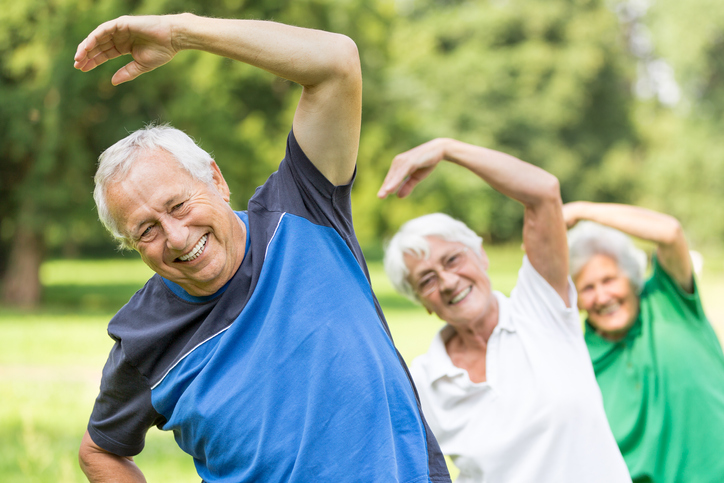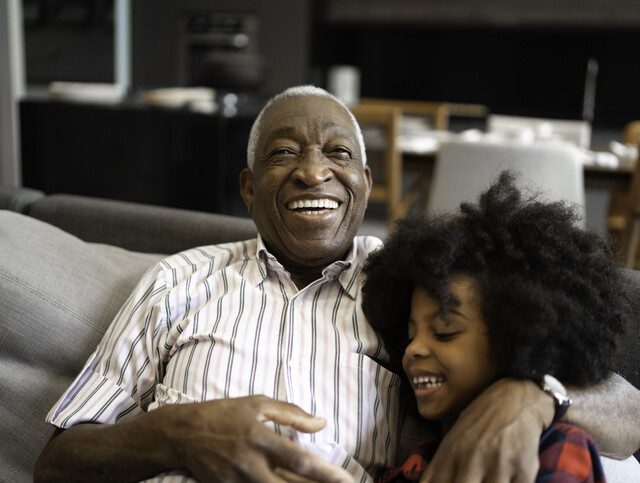We all want to maintain our independence for as long as possible as we age. One of the surest ways to stay healthy, active and independent is to enact fall prevention strategies to ensure you’re not one of the millions of older Americans who experience a fall each year. Here are some helpful tips on how to prevent a potentially dangerous fall.
How to Prevent Falls
Falls are not inevitable! There are several strategies you can put into place to prevent falls. Using all of these strategies together can significantly reduce your risks.
Assess Your Fall Risk Factors
Before developing a fall prevention strategy, it may be helpful to understand your current abilities so that you can target areas to improve. At Oak Trace, we offer residents access to VSTBalance and VirtuSense tools. These automated fall-risk assessment tools utilize artificial intelligence with machine vision to identify fall risk indicators.
The evaluation only takes a few minutes, and creates a report that assists residents in identifying early deficits in balance, gait and function. Treatment plans are then developed. Plans include engaging biofeedback activities that assist in reducing falls and improving mobility.
This type of risk assessment and the creation of unique, personalized plans has been shown to:
- Reduce post-acute care falls by 73%
- Improved mobility for residents by 85%
Those without access to such a program can speak to a healthcare professional about possible alternatives for identifying their risk factors.
Be Aware of Current Health Conditions
There are many different health conditions that can affect balance. Fortunately, many of these conditions can be addressed by working with your healthcare provider to find solutions for your needs.
Common health conditions that can lead to falls include:
- Balance issues due to previous injuries, muscle atrophy or diminished agility
- Vision problems associated with the natural aging process, chronic eye conditions or an outdated eyeglass prescription
- Medicine side effects like dizziness or fatigue which can impair physical state
- Chronic conditions which can reduce movement and cause pain
Create a Safer Home Environment
Seniors living at home can see a reduced risk of falls by properly setting up their space to create a safer living environment. This includes adding secure railings on stairs and assistance bars in bathrooms and better lighting throughout the home. If possible, adding specialized amenities like walk-in bathtubs and lift chairs can also make daily tasks easier.
In many cases, significant changes to a home may be impractical for many seniors. In these scenarios, a senior living community may be the best option. In a community like Oak Trace, seniors can live independently as they would at home, but in an environment catering to their specific needs.
Practice Balance Exercises
One of the best ways to prevent falls is by intentionally practicing activities to improve balance. Balance exercises are a great way to improve balance and stability as we age. By working on these simple movements for a brief period each day, seniors can retain muscle and improve flexibility. Being strong and mobile can also boost confidence and minimize the risks associated with a sedentary lifestyle. Community living makes this even easier with custom fitness plans, on-site activities and opportunities for socialization. Be sure to talk with your doctor before beginning any type of exercise regimen or program.
What to Do If You Fall
While proper planning and fall prevention strategies can significantly minimize the risk of falling, they cannot remove it completely. However, by knowing what to do in the event of a fall, you can lessen the risk or severity of injuries and improve recovery times.
Stay Calm and Check for Injuries
Staying calm can help you in any emergency situation. This is true for falls, as well. If you fall, take a few deep breaths and collect yourself. By avoiding panic, you will be able to think more clearly to determine a solution.
With a calm mind, you can more clearly assess if you have been injured in the fall. If you have suffered any injuries, keep this in mind as you move yourself into a safer position so as to not make your situation worse.
Call an Emergency Contact or 911
If possible, call an emergency contact or 911 right away if injuries are significant. This will allow those who can help you to begin quickly moving to your location.
If you are unable to immediately contact help, slowly move yourself towards a sturdy object with which you can pull yourself upright. Even in the event you are able to raise yourself unassisted, you will want to contact a caregiver, family member, or member of your medical team to inform them of your fall. This will make them aware should any delayed effects of the fall further incapacitate you.
Follow-Up with Your Care Provider
One of your first priorities after ensuring your safety should be to follow-up with your doctor. Even if you are not seriously injured, you will want to discuss the incident. Note any recent changes to your health, circumstances surrounding the fall or any other factors that may have contributed to the event.
Address Any Contributing Factors
The final step to take after an event is to enact fall prevention strategies to reduce the chances of falling in the future.
- Was your fall caused by a change in medicine? Your provider may be able to prescribe an alternative.
- Did you trip in a poorly lit area or on misplaced furniture? Address any hazards within your home to prevent future mishaps.
- Did you suddenly become dizzy or disoriented while performing a certain activity? Consider whether any underlying conditions may be at fault.
In addition to addressing possible contributing factors, you may want to take additional steps to create a safer environment as well. Update emergency numbers and place them near any phones, schedule daily check-ins with friends or loved ones or consider investing in a personal emergency response system. You may also want to consider moving to a senior living community where your safety is a priority.
Explore Lifestyle Options at Oak Trace
Oak Trace in Downers Grove, Illinois, offers senior living options for every lifestyle. Whether you’re an independent senior looking to join a vibrant neighborhood, or you need a little more assistance, you’ll find a welcoming community waiting for you. Residents also get access onsite to VirtuSense and VSTBalance, a rehabilitative technology that reduces falling risks by improving balance and increasing mobility through biofeedback activities.
Contact us for more information, or to schedule a tour.


